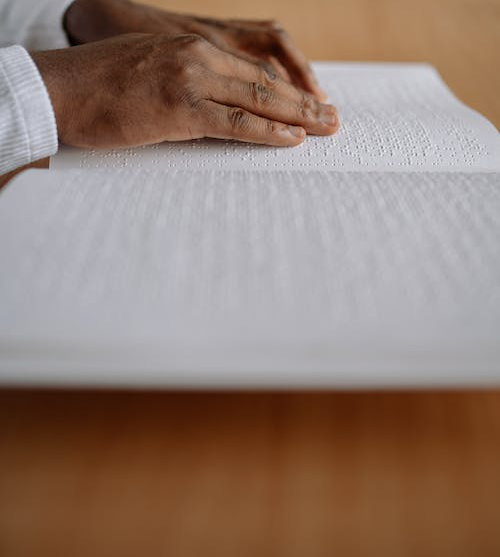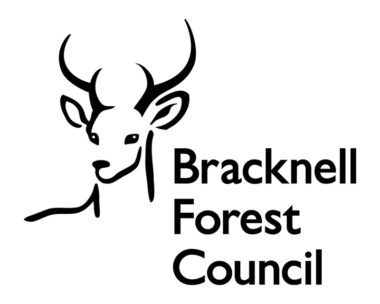Over the last 150 years, communication methods for the visually impaired have improved dramatically.
The information throughout this blog will give dates and a short description of the progress made for visually impaired people and communication methods, along with looking into the inclusive technological advancements that have enabled us to freely locate and understand a lot more information.
Lots of communication methods are visual, and someone who is visually impaired mostly relies upon someone conveying the message back to them. The journey of visually impaired people being more involved in communication by other means started in the 1800s with Charles Barbier.
Charles Barbier’s Tactile Military Night Writing
In the 1800s, when serving in Napoleon Bonaparte’s French army, Charles Barbier developed a unique system known as ‘night writing’. This system allowed soldiers to communicate safely during the night, as previously, soldiers could be identified at night time when trying to communicate using light sources.
Night writing was communicating tactile military code, using symbols of two columns of six dots embossed on paper. This simple idea led to Louis Braille’s invention.
How Louis Braille Perfected the Braille Communication Method
Louis Braille was born in France on 4 January 1809. He was involved in an accident at a young age which caused his blindness.
At eleven years old, Braille was inspired to modify Charles Barbier’s ‘night writing’ code to be a more efficient written communication system for fellow blind individuals.
When at the National Institute of the Blind in Paris, from the age of 9 to 20, he perfected the braille system that is still in use today.
Today, braille can be seen and felt on items such as medication and potentially dangerous items such as bleach. However, for a long time, braille was the only way of communicating until the ability to record a voice was invented.
The Invention of Human Voice Recording
The earliest recording of the human voice was on 9th April 1860, which was of a woman singing a French folk song. Although the most recognised recording, giving people the ability to listen back, was Thomas Edison in 1877, when he recorded ‘Mary had a little lamb’.
A gentleman named Emile Berliner in 1888 then invented the flat disc record. This enabled visually impaired people to get access to recordings of information and stories, which were previously only available in print.
How Compact Discs Paved the Way for Advancements in Entertainment for the Visually Impaired
The Compact Disc (CD) was conceived in a meeting between Philips (then known as Royal Philips Electronics) and Sony in 1979.
The CD marked a transition from analogue technology to digital sound, and it has paved the way for advancements in entertainment.
The first CD ever made was created on August 17, 1982. This creation changed the way that visually impaired people could receive letters, bills, or books, enabling a great choice of entertainment, communication, and education. However, looking back on it today, there was still a limitation on the amount of resources available and how long it would take to find the exact information on a specific topic or part of a book.
The launching of the internet gave everyone instant access to all types of knowledge, along with instant access to communication through email. Though, when we say everyone, it was not until some time later that the invention of Screen Readers for computers allowed visually impaired people to access the same content that everyone else had.
Screen Reader Software Providing Greater Accessibility For Those with Disabilities
In 1984, Jim Thatcher worked at IBM. Screen reader software was created just to allow those who were visually impaired to be able to work on the computers at IBM. However, over the years, it has now given everyone the opportunity to use a computer.
Previously, bills or news came as braille or on a tape or CD. Now screen readers enable people with visual impairments to find information on the internet, post on social media, or type and read documents and emails. Screen reader software has even been developed to be used with mobile phones, which gives even greater accessibility for those with disabilities.
Accessibility Features on Mobile Phones for Those With Visual Impairments
With modern-day innovations, there is an importance on ensuring accessible features are available on mobile phones. If constructed correctly, there are facilities that allow texts, emails, the internet, and even pictures and emojis to be read out by a form of screen reader – enabling inclusive communication.
Modern-day Accessible Advancements in Technology
In 2022, there are many facilities for someone who is visually impaired to get information, entertainment, and be able to communicate whenever they want to.
Though we’ve seen a lot more advancements in this area, these innovations rely on the designer or communicator to correctly construct the information for all these facilities to be able to work and be accessible.
This is especially evident on websites and apps. Some of these are great for visually impaired people, while others aren’t accessible at all. Sadly, until there are stricter rules surrounding accessibility, some companies do cut corners or don’t try to make their platforms inclusive for all.
Have a think about how you communicate in your workplace – do you include everyone?
The Hope for Accessible Resources in the Future
Throughout this blog, we have looked at the progression and acknowledgement of the need for people with a visual impairment to have communication, education and enjoyment. However, despite the advances in the methods of communication, reading information for the visually impaired is still not being thought of. There are still banks, shops, and even medical practices, including hospitals, which do not always accommodate information in an accessible version.
Fortunately, the UK Government is now realising the importance of digital accessibility. This was started in September 2020 and is ongoing, and we are seeing a lot more Government sites being more accessible for the visually impaired and others that use assistive technologies. Hopefully, this will lead to all information being accessible to everyone in the future.







